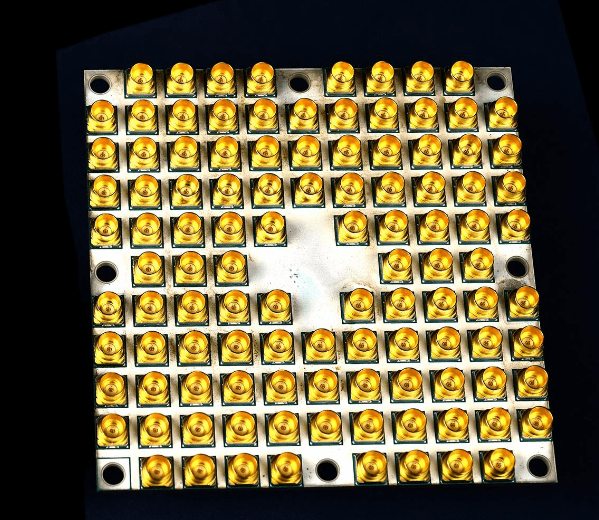Intel together with QuTech (a venture that is a collaboration between the Netherlands Organization for Applied Scientific Research and the Delft University of Technology) – recently have published some important advancements into solving the interconnect bottleneck issue. This is an important advancement because this issue exists between quantum chips that sit in cryogenic dilution refrigerators and the complex room-temperature electronics that control the qubits. These advancements technology were covered in many industry-leading science journals like Nature, and mark a big milestone in solving one of the biggest challenges to quantum scalability, all achieved with Intel’s new cryogenic controller chip named Horse Ridge.
Our research results, driven in partnership with QuTech, quantitatively prove that our cryogenic controller, Horse Ridge, can achieve the same high-fidelity results as room-temperature electronics while controlling multiple silicon qubits. We also successfully demonstrated frequency multiplexing on two qubits using a single cable, which clears the way for simplifying the ‘wiring challenge’ in quantum computing. Together, these innovations pave the way for fully integrating quantum control chips with the quantum processor in the future, lifting a major roadblock in quantum scaling.
Stefano Pellerano, Head Engineer at Intel Labs
Why this breakthrough matters?
This key bottleneck lies in between the quantum chip that is stored in low below freezing cryogenic temperatures in a special dilution refrigerator and the room temperature control electronics that are controlling the qubits. So, getting these control electronics to operate at high fidelity at low cryogenic temperatures is the key in solving this issue, named as the “interconnect bottleneck”, also sometimes referred to as wiring bottleneck. Intel stepped up on solving this challenge when it unveiled the Horse Ridge, a cryogenic control chip for qubits that was built on using Intel’s 22m FinFET technology. The Horse Ridge chip brings some key functions for controlling quantum computer operation into low cryogenic temperatures, getting itself as close as possible to the qubits themselves, to streamline the complexity of control wiring for quantum systems.
The latest advancement successfully demonstrates great results from randomized benchmarks and shows that commercial CMOS-based cryo-controller can achieve coherent control over a two-qubit processor at the same levels of fidelity (99.7%) as room-temperature electronics. This research marks a turning point in the field of cryo-electronics for quantum computing.
More info about the research
Intel together with QuTech has also successfully shown frequency multiplexing by using the same cable to gain control of the two qubits. This is an important announcement because today each qubit can only be controlled by its cable individually. This old approach is not scalable because the qubit count increases. The newest 22mn Horse Ridge chip aims to solve that constraint by leveraging multiplexing to reduce the number of radiofrequency cables that are needed to gain control over the qubit. Read the full article.
The team that conducted the research has also demonstrated the programmability of the controller, by running two-qubit algorithms called the Deutsch-Jozsa algorithm. About this algorithm can be noted that is more efficient on a quantum computer than on a traditional computer.
Randomized benchmarking was performed over the Horse Ridge chip that validated the original promise of the chip as a highly integrated and scalable solution for its purpose of simplifying quantum control electronics, and made proof that this technology can be applied directly to multi-qubit algorithms and noisy intermediate-scale quantum devices.
What’s next for this research?
With the continuation of this research, soon it may be even possible to completely integrate the controller chip and the qubits on the same die, because they are both fabricated in silicon, paving the way for quantum scalability.
Intel’s and QuTech US$50M collaboration is going to be crucial and will provide ongoing engineering resources that will help accelerate the developments in this field. QuTech advanced research and education center for quantum computing in the Netherland’s, combined with Intel’s expertise in fabrication, control electronics and architecture will be a great combination that will try to solve the challenges of developing the first feasible quantum computing systems.

